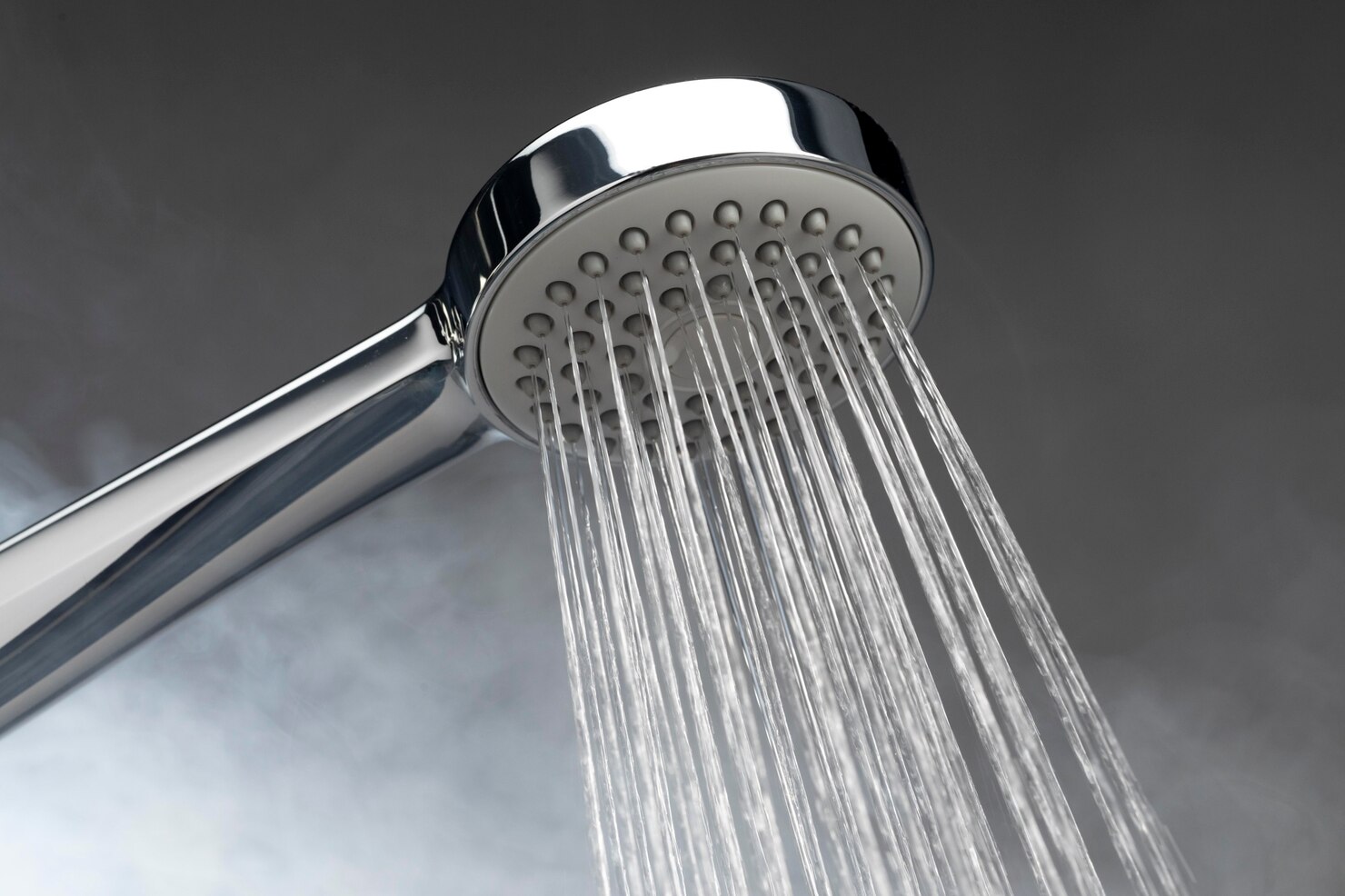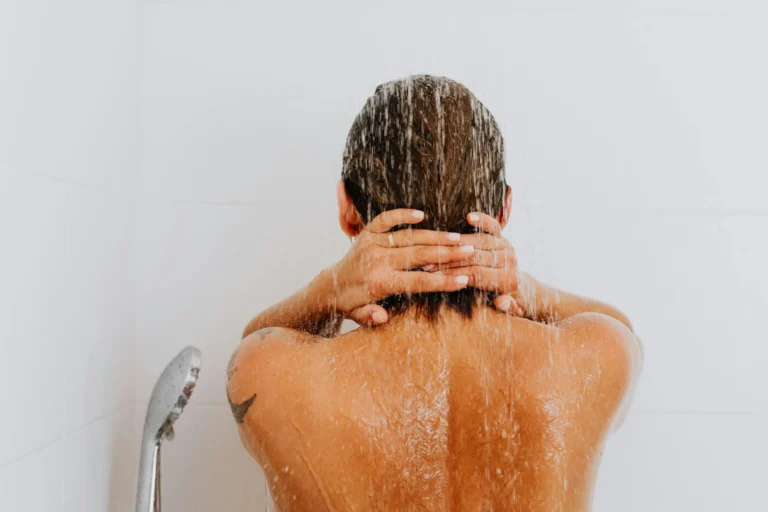Can You Use Pex For Shower Head
If one is contemplating the utilization of PEX for shower head installation, it is important to consider the advantages and disadvantages associated with using PEX pipes in this context. Additionally, alternative options such as copper, PVC, and galvanized steel pipes should be taken into account.
This discussion includes a systematic guide detailing the installation process of a shower head using PEX pipes. Furthermore, safety precautions and maintenance tips are provided to ensure the optimal functioning of PEX pipes.
Delving further into the topic of utilizing PEX for a shower head, one can gain valuable insights and knowledge on this subject matter.
Can You Use PEX for a Shower Head?

PEX tubing has garnered significant popularity in contemporary plumbing installations, particularly in the context of home improvement projects involving shower heads. This versatile and durable material is favored for its flexibility, cost-effectiveness, and ease of installation, making it a desirable choice for both do-it-yourself enthusiasts and industry professionals.
What are the Benefits of Using PEX for a Shower Head?
Utilizing PEX for a shower head presents a multitude of advantages, including the presence of flexible tubing that can navigate intricate spaces, compatibility with various fittings and connectors, resistance to corrosion, and cost-effectiveness in terms of both materials and installation.
The pliable nature of this tubing material facilitates straightforward installation in constrained areas, rendering it particularly suitable for bespoke shower configurations. Its compatibility with a diverse array of fittings guarantees seamless connections, thereby diminishing the probability of leaks and optimizing the system’s overall efficiency. The durability of PEX ensures longevity, as it withstands the detrimental effects of harsh water conditions, consequently reducing the necessity for frequent maintenance. Consequently, PEX emerges as a dependable and low-maintenance alternative for showers and plumbing systems.

What are the Drawbacks of Using PEX for a Shower Head?
While PEX offers numerous advantages, it is essential to recognize the associated drawbacks. These include sensitivity to UV light, susceptibility to temperature fluctuations, and the necessity of complying with local plumbing codes and regulations.
Addressing the downsides of PEX is crucial for the successful functioning of a plumbing system. Professionals often recommend the use of UV-resistant PEX to mitigate its sensitivity to UV light. Temperature variations can present challenges, potentially resulting in pipe expansion or contraction. Compliance with local plumbing codes and regulations is paramount to avoid legal ramifications.
To effectively manage these challenges, it is advisable to seek expert guidance on installation requirements. By adhering to code compliance and comprehending the limitations of PEX, homeowners can minimize risks and establish a dependable plumbing system.
What are the Alternatives to PEX for a Shower Head?
In evaluating alternatives to PEX for showerhead installations, viable options include copper pipes, PVC pipes, and galvanized steel pipes. Each of these options presents distinct advantages in terms of material strength, durability, and environmental sustainability.
1. Copper Pipes
Copper pipes are commonly selected for plumbing applications due to their established reputation for durability, longevity, and superior resistance to corrosion, making them a preferred choice in professional plumbing installations for their reliability.
These pipes have demonstrated their ability to endure high pressure and fluctuations in temperature without compromising their structural integrity, rendering them well-suited for use in both residential and commercial settings. The material properties of copper further contribute to its popularity, as it exhibits resistance to bacterial growth and does not introduce harmful substances into the water supply.
When installed professionally, copper pipes establish a leak-proof and effective plumbing system capable of lasting for extended periods, thereby reducing the frequency of necessary repairs and replacements.
2. PVC Pipes
Polyvinyl chloride (PVC) pipes are recognized as a cost-effective and lightweight option for shower head installations, offering a practical and versatile solution for a wide range of plumbing applications.
These pipes are highly regarded by both homeowners and industry professionals for their economical value, making them an attractive option for plumbing projects that prioritize affordability without compromising quality. The lightweight characteristics of PVC pipes not only facilitate easier handling and transportation but also contribute to reduced labor expenses during the installation process. The straightforward installation process not only saves time and effort but also enables the swift and efficient completion of plumbing tasks.
The adaptability of PVC pipes spans across various applications including drainage systems, irrigation, and electrical conduit, providing a dependable solution for diverse requirements. Adhering to prescribed guidelines for appropriate utilization is paramount to ensure the optimal performance and longevity of the PVC pipes.
3. Galvanized Steel Pipes
Galvanized steel pipes are recognized for their robustness and endurance, offering superior corrosion resistance. However, their installation typically necessitates the expertise of professionals due to their weight and the intricacy of connections.
These pipes are fabricated from steel that has been enveloped with a protective zinc layer, augmenting their resistance to rust and other forms of corrosion. This attribute renders them suitable for a diverse array of applications, particularly in plumbing and HVAC systems, where exposure to moisture is a prevalent concern.
A drawback associated with galvanized steel pipes is their relatively higher initial cost when compared to alternative materials. Improper installation can result in leaks and structural complications, emphasizing the significance of engaging professional services to ensure a secure and dependable configuration.
How to Install a Shower Head Using PEX?
The installation of a shower head using PEX entails a series of steps and necessitates the use of specific tools and instructions to guarantee a successful and leak-proof connection. This makes it a feasible do-it-yourself project for individuals possessing a certain level of plumbing expertise.
1. Gather Materials and Tools
Ahead of commencing the installation process, it is essential to gather all the requisite materials and tools. This includes PEX tubing, connectors, adapters, fittings, and comprehensive instructions to facilitate a smooth and efficient workflow.
Utilizing appropriate materials such as PEX tubing, renowned for its flexibility and corrosion resistance, in conjunction with connectors for seamless tube connections, adapters for fixture attachment, and fittings for secure joints, is imperative for the successful execution of the project. Adherence to the detailed instructions provided is vital to ensure the accurate and safe completion of the installation.
By employing these prescribed materials and tools in accordance with the accompanying instructions, you will be able to accomplish the task proficiently, yielding professional-grade results.
2. Turn off Water Supply
The initial step in the installation procedure involves the deactivation of the water supply using the shutoff valves, a critical safety measure aimed at preventing water damage or leaks during the installation process.
By deactivating the water supply, individuals ensure the cessation of water flow, thereby diminishing the likelihood of accidents and rendering it safer to engage in plumbing system work. Shutoff valves facilitate the isolation of water specifically to the designated area of work, obviating the necessity to deactivate the water supply for the entire household. This targeted approach not only economizes time but also curtails disruptions to other domestic activities.
Emphasizing safety protocols of this nature can enhance the efficiency and smoothness of the installation process.
3. Cut and Prepare PEX Pipe
It is important to carefully measure and cut the PEX pipe to the necessary length using a specialized PEX cutter. Following the cutting process, the edges should be deburred to guarantee smooth connections before moving forward with the crimping phase.
After the PEX pipe has been cut, it is vital to verify that the length is accurate and complies with the installation requirements. Utilizing a properly calibrated PEX cutter is essential for producing clean and straight cuts, thereby preventing any uneven edges that could potentially result in leaks.
Furthermore, deburring should be conducted after cutting to eliminate any sharp edges or burrs that could compromise the seal. This particular step is crucial for preserving the integrity of the connections. Subsequently, attention should be given to preparing the fittings, ensuring they are spotless and devoid of any debris prior to advancing to the crimping process.
4. Connect PEX Fittings
It is essential to securely connect the PEX fittings and connectors in accordance with the manufacturer’s instructions to guarantee each joint is adequately sealed, thereby creating a leak-proof connection.
The proper attachment of connectors and fittings to PEX tubing is a critical aspect of a successful plumbing installation. The process commences with a meticulous selection of the appropriate fittings for the task and verifying their compatibility with the tubing size to establish a secure connection. Ahead of joining the components, it is imperative to cleanse and deburr the tubing ends to eliminate any potential obstructions that could lead to leaks. Adhering to the prescribed techniques for crimping or cinching the fittings is pivotal in ensuring a tight seal, ultimately facilitating a dependable and enduring connection for the plumbing system.
5. Install Shower Head
Secure the shower head to the PEX fittings using suitable adapters, ensuring an optimal flow rate and water pressure to enhance the showering experience.
Ahead of attaching the shower head, it is imperative to carefully select adapters that are compatible with both the fittings on the shower head and the PEX piping. This guarantees a tight and leak-free connection, maintaining the desired water pressure levels.
During the installation process, ensure that the fittings are tightened adequately to prevent any potential leaks. Consider the flow rate of the shower head to align it with personal preferences, whether desiring a gentle rainfall or a stronger, more invigorating stream. Adequate water pressure is essential as it directly impacts the shower head’s performance and overall effectiveness.
6. Turn on Water Supply and Test
Upon completion of the installation, it is recommended to activate the water supply and meticulously examine the connections for any potential leaks. Verification of correct pressure balancing should be conducted, and any encountered issues should be promptly addressed.
Commence the procedure by identifying the primary water shut-off valve within the premises, and gradually rotate it clockwise to allow the water supply to flow. Subsequently, conduct a thorough visual inspection at each connection point to detect any indications of leakage. It is imperative to ensure the appropriate pressure balancing by running water through the system and confirming a uniform flow. In case of encountering challenges such as inadequate water pressure or leaks, it is advised to consult the troubleshooting guide provided by the manufacturer to mitigate these issues effectively.
Is it Safe to Use PEX for a Shower Head?
PEX is deemed safe for use in conjunction with shower heads when appropriately installed in accordance with plumbing codes and guidelines.
Its commendable attributes include excellent temperature regulation, durability, and the preservation of water quality, rendering it a dependable option for residential plumbing systems.
What are the Safety Precautions to Take?
When installing PEX for a shower head, it is imperative to adhere to safety protocols, including the cessation of the water supply, avoidance of common errors such as inadequate crimping, and strict adherence to installation guidelines to ensure the establishment of a secure and effective plumbing system.
Ahead of commencing the installation procedure, it is essential to meticulously measure and cut the PEX tubing to the designated length using a PEX cutter to prevent any potential leaks or damages. Furthermore, it is crucial to guarantee that all connections are firmly crimped utilizing the appropriate tools and fittings. Subsequently, it is recommended to perform a pressure test subsequent to installation to detect and rectify any plausible leaks.
Moreover, it is paramount to always utilize suitable safety equipment, including gloves and eye protection, during the handling of PEX piping to mitigate any potential accidents or injuries.
How to Maintain PEX Pipes for a Shower Head?
Ensuring the upkeep of PEX pipes for a shower head necessitates routine inspections to detect and address leaks promptly. Moreover, it is essential to prioritize the installation of proper insulation to shield the pipes from temperature fluctuations. These measures are critical for enhancing the durability and efficiency of the plumbing system, ultimately contributing to its long-term functionality.
1. Regularly Check for Leaks
It is recommended to regularly inspect PEX pipes and connections for leaks in order to detect and address any potential issues in a timely manner to prevent further escalation.
One effective method to ensure the leak-free status of a PEX system is to routinely conduct visual inspections. This involves examining the fittings and connections for any indications of moisture or dripping. Along with the visual assessment, a pressure test can be conducted on the system to identify concealed leaks. Unusual sounds or variations in water pressure should be closely monitored, as they may signal issues with the connections. By maintaining a proactive approach and attentiveness to these details, one can proactively prevent leaks and uphold the operational efficiency of the PEX system.
2. Prevent Freezing
For avoid freezing, it is important to properly insulate PEX pipes, particularly in regions that experience extreme temperature variations, to uphold their durability and prevent potential damage in colder climates.
The focus on insulation not only serves to safeguard the pipes from freezing but also assists in maintaining a consistent water flow. Utilizing foam sleeves or heat tape to wrap the pipes can prove to be effective methods. Additionally, sealing any gaps or cracks in doors, windows, and walls can provide further protection against cold air. Regularly assessing the insulation status and reinforcing it as necessary is essential for long-term maintenance and to mitigate the risk of costly repairs resulting from frozen or burst pipes.
3. Avoid Excessive Heat Exposure
It is advisable to refrain from subjecting PEX pipes to excessive heat, as doing so may compromise their durability and safety. Implementing temperature control measures is essential to ensure the longevity and integrity of the plumbing system.
PEX pipes are susceptible to damage when exposed to high temperatures, leading to deformation, weakening, and potential leaks. In severe instances, elevated temperatures can result in pipe bursting, necessitating costly repairs and causing water damage. To mitigate these risks, it is imperative to maintain a distance between PEX pipes and heat sources such as direct sunlight, hot appliances, and heating systems. Conducting regular maintenance inspections can aid in the early detection of any indications of heat-related damage, enabling prompt repairs and enhancing the overall lifespan of the plumbing system.
4. Properly Secure Pipes
The proper securing of PEX pipes and fittings is imperative for the maintenance of the plumbing system’s integrity, ensuring the stability of all connections and minimizing the possibility of leaks and consequential damage over time.
In the realm of pipe securement, a focal point on fittings and connections is essential. By adhering to best practices, which encompass the utilization of suitable tools and techniques, one can substantially augment the durability of their PEX system. Adequately securing fittings serves not only to prevent leaks but also guarantees the efficient flow of water throughout the system. Secure connections play a pivotal role in the comprehensive upkeep of the plumbing system, ultimately resulting in time and cost savings by preempting the need for extensive repairs in the future.
Frequently Asked Questions
Can you use PEX for shower head?
Yes, PEX can be used for shower head installation. PEX (cross-linked polyethylene) is a flexible and durable type of plastic piping that is commonly used in plumbing systems, including for shower installations.
What are the benefits of using PEX for shower head?
There are several benefits to using PEX for shower head installation. PEX is flexible and easy to work with, making it suitable for tight spaces and curved designs. It is also resistant to corrosion and scale buildup, ensuring long-term durability.
Are there any drawbacks to using PEX for shower head?
While PEX is generally a reliable material for plumbing, there are a few potential drawbacks to using it for shower head installation. PEX can be sensitive to UV light, so it should not be exposed to direct sunlight. It also has a lower temperature and pressure rating compared to other materials like copper.
Can PEX be connected directly to a shower head?
No, PEX cannot be directly connected to a shower head. PEX piping is not meant to be used as a visible exposed pipe and should be concealed behind walls. The shower head should be connected to the PEX piping through a valve or fitting.
Is it easy to replace a shower head connected to PEX?
Replacing a shower head connected to PEX is a relatively straightforward process. The PEX piping can be cut and a new valve or fitting can be installed to connect the new shower head. However, if you are not familiar with PEX plumbing, it may be best to hire a professional for the job.
Can PEX be used for both hot and cold water supply to a shower head?
Yes, PEX can be used for both hot and cold water supply to a shower head. PEX piping is suitable for both hot and cold water and can withstand temperatures up to 200 degrees Fahrenheit. However, it is important to use the appropriate PEX pipe and fittings for each supply line.
Read More: Why Do I Hate Showering





